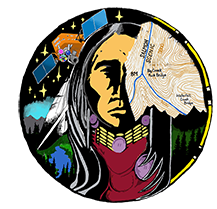

We publish under four tracks, which include: Native Sciences Research, Insight (including Spiritual), Personal Experience, and Perspectives (opinion). Authors need to identify which track they wish to be published under, when submitting the article. All manuscripts submitted to the Journal of Native Sciences must be written from the "heart" and address issues that greatly affect the lives of Indigenous peoples. When developing your article, you should suggest a strategy or method that will have an impact on policy, law, social justice, and/or marginalization. Authors should also be mindful of the needs of others, including the four legged, finned, that which grows, the feathered, water, and mother earth.
Email the editors for more information.
For scientific research papers, the manuscript must include the following sections: Title, Name of Author(s), Abstract, Key Words, Introduction, Methodology, Results, Discussion, Conclusion, Giving Back, and Acknowledgment. Authors should also supply a biosketch of themselves (no more than 3 lines), the biosketch should identify what Indigenous Nation you belong (if applicable). The purpose of the section "Giving Back", to identify things of value that can be given back to Indigenous peoples. For example, the research may have produce data or products that may be of value to Indigenous peoples. Acknowledgements should identify individuals who contributed to the research and must identify any funding source used to complete the research. Native Sciences Journal may charge a fee for publications supported by outside parties (e.g., National Science Foundation).Abstracts should be no more than 200 words and italicized. You should also supply up to seven key words that are representative of the manuscript. Key words should be bolded. Papers submitted under this track should be between 4,000 and 8,000 words, not including citations.
Format of manuscripts submitted under these tracks is at the authors discretion, but manuscript under these tracks must identify a purpose and have a stated outcome or significance to Indigenous people. For example, personal experiences should be related to some social issue personally experienced that results in marginalization or is relevant to a larger group of Indigenous people. They can also be warnings, teachings, and predictions. This is also true with spiritual insights and teachings. Under these tracks we suggest articles be written as a news article for the lay person and include a lot of photographs.
In general, the Native Sciences Journal follows the Chicago Style, and it is recommended that authors use Microsoft Office's Chicago Style for footnotes, citations in text, and reference citations. Otherwise we recommend the authors review: A Manual for Writers of Research Papers, Theses, and Dissertations Chicago Style for Students and Researcher by Kate L. Turabian, and the Chicago Manual of Style by the University of Chicago Press. Authors should also follow the guidance below. When in doubt, refer to the recommended books. All manuscripts should be single spaced and use Times New Roman Font. Font size 11 should be used for the text of the body. Justify the body of the text. Headers should be no larger than size 16 and margins set to 1" on all sides. Authors must identify which track they plan to submit the article under, contact information, and a brief statement why the manuscript is important to Indigenous peoples. This information should be provided in a separate cover letter or part of the email accompanying manuscript.
We are aspiring to be a source for book publication, especially books written by Indigenous peoples. Please contact the Editor to discuss book publishing potential and what JNS may be able to offer.
The last name of the author should be provided first followed by the year of publication. Page number(s) must also be identified after year and separated by a comma.
Example: An untold number of prairie plants were gathered by women, and the efforts of women were a necessity to maintaining tribal health and wellbeing (Hunn 1990, 37, Scheuerman and Finely 2008, 27, Davis, et al. 2015, 57-58)
Measurements can be in either the metric or English system. Authors should carefully consider who is the intended audience of the manuscript and what measurement system will they understand best. For example, in the United States most Native Americans are familiar with the English system of measurements (e.g., acres, feet, etc.) better than the metric system. If the intended audience includes Native Americans from the United States it is recommended that authors use the English system.
When referring to an organism the common name should be used first followed by the scientific name. For example, Ponderosa pine (Pinus ponderosa). It is not necessary to provide the authority of scientific names.
Figures and tables should be placed near the text where they are introduced and centered. The caption of figures should be below the figure and above tables. Descriptions of figures, tables, photographs, and art should all be centered and provide enough information to stand alone. Figures can be either black and white or color, and must be saved at high resolution. Text used in figures must be legible. The font of figures and tables must be in italics. The column header of tables should be bold and repeated, if table spans multiple pages. It is the responsibility of the author gain permission to use photographs and art as part of the publication process. Preferrably the author should only use photographs in which they have written permission to use. In other words, make sure the people in your photograph give you consent to use their image. We do encourage the use of photographs and art, especially on the cover. All photographs and art must give credit to creator, or copyright holder. Journal editors may require more information on credits used as part of submission review process.
When using Indigenous words, the text should be in italics. We do invite articles written in the heritage language of the author(s). Articles written in an Indigenous language must follow an established orthography, which must also be submitted with the English version of the article.